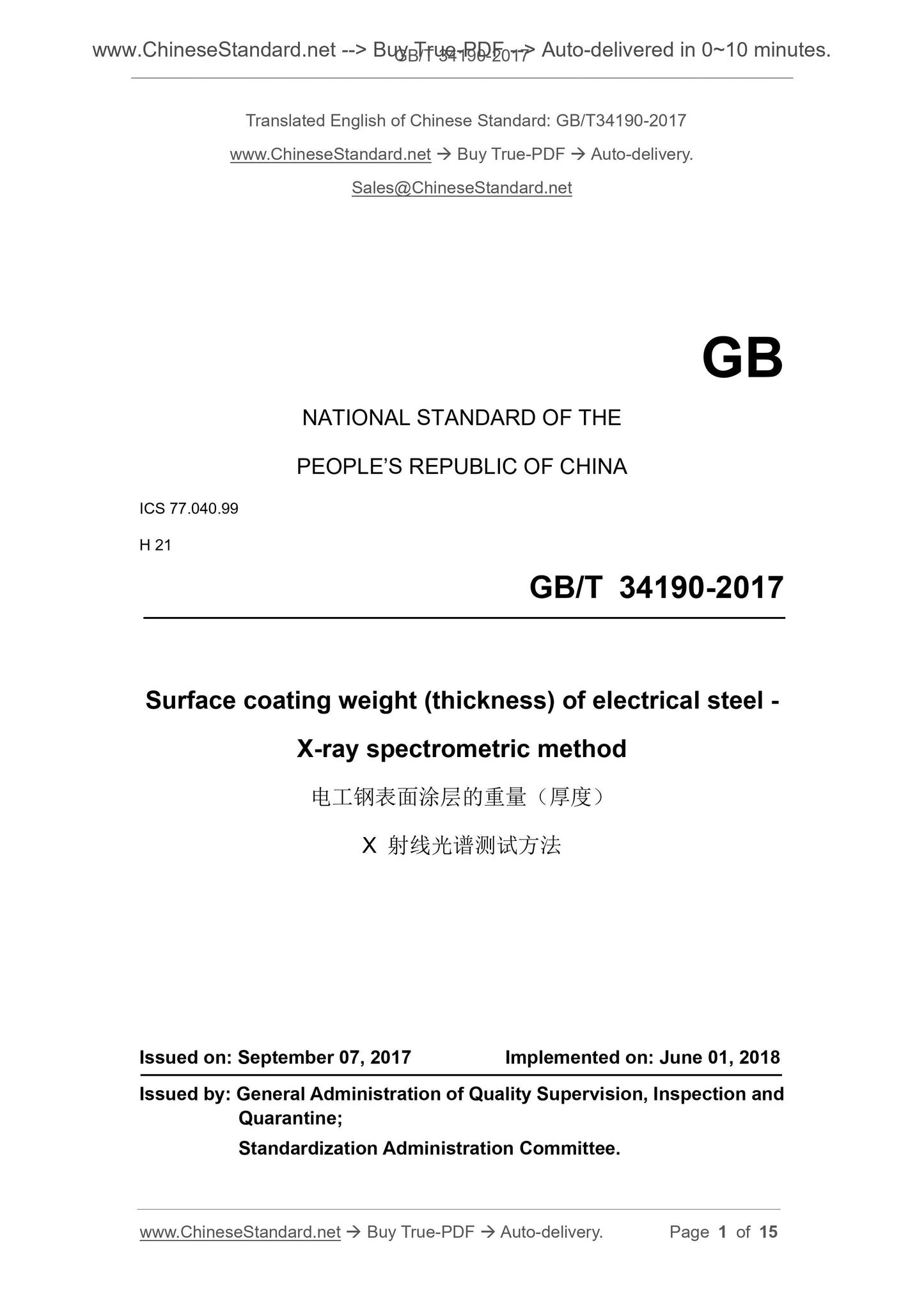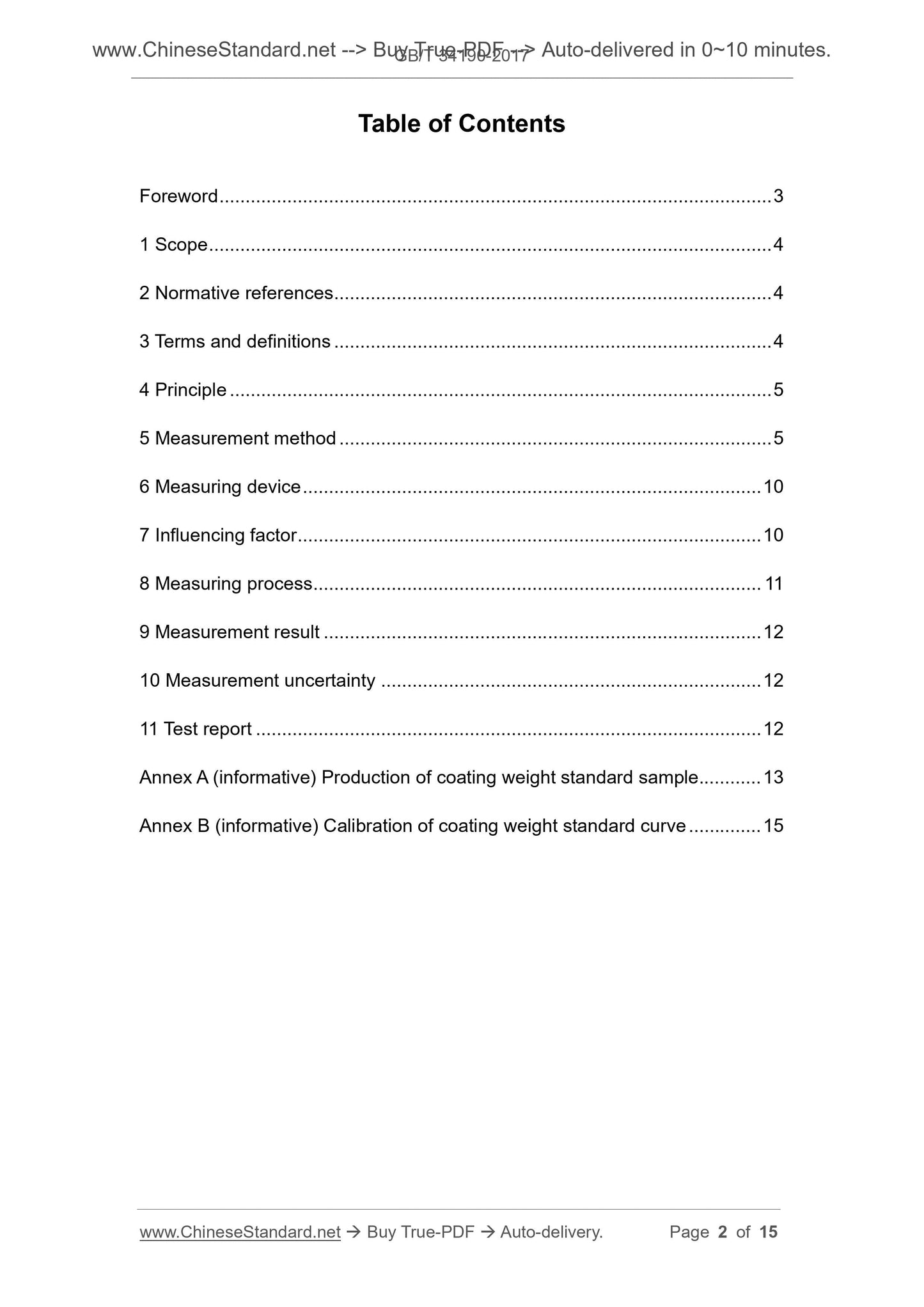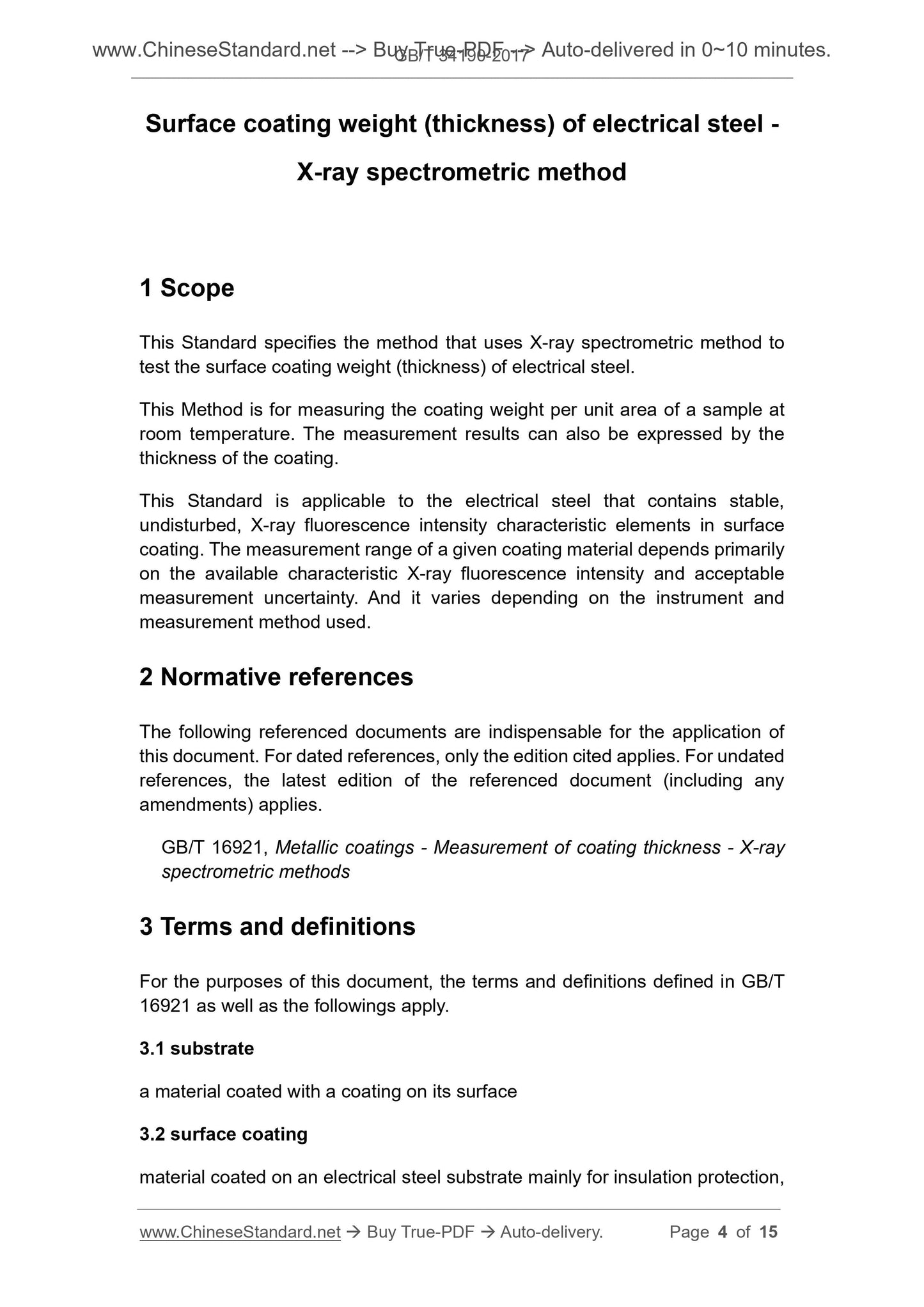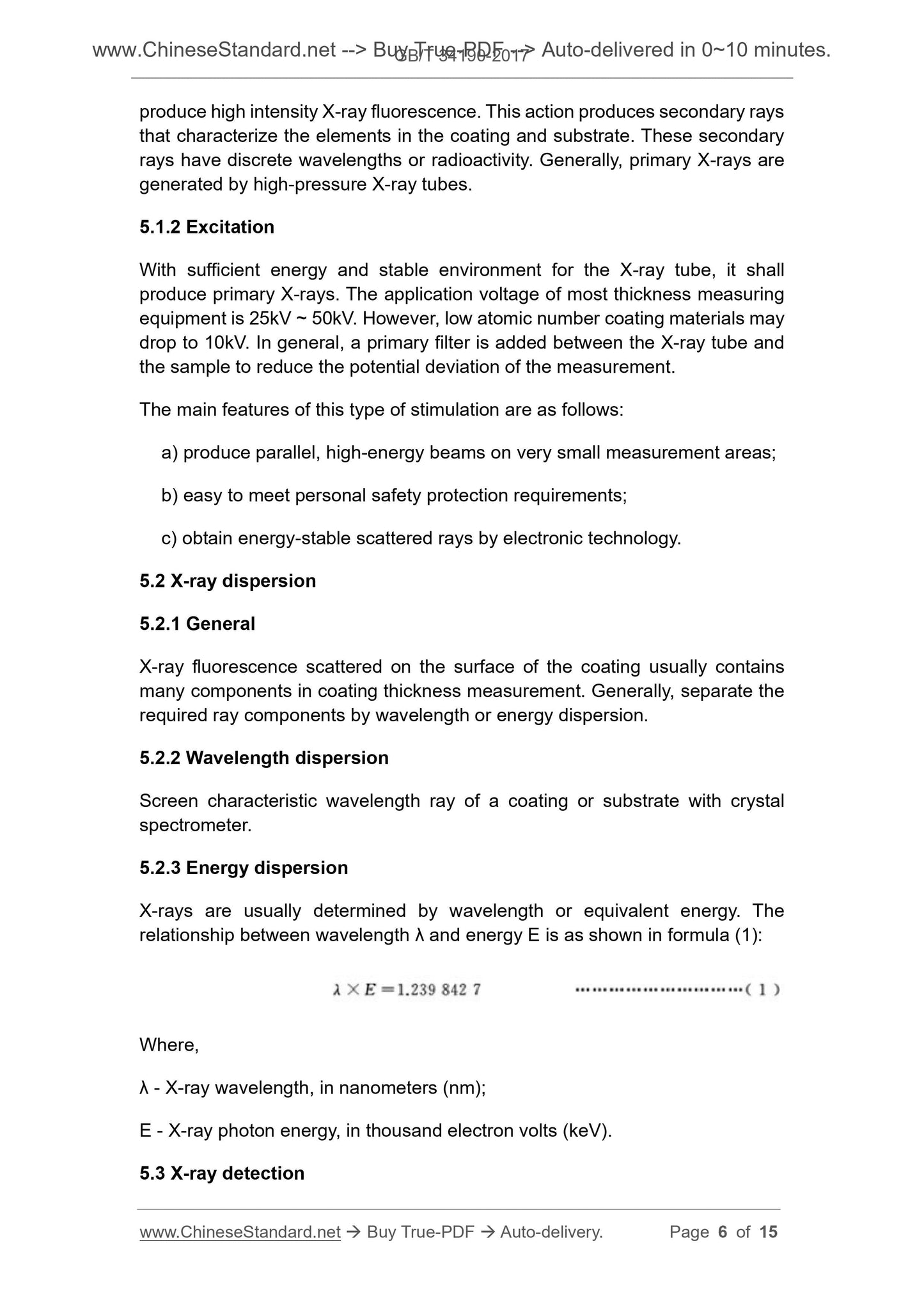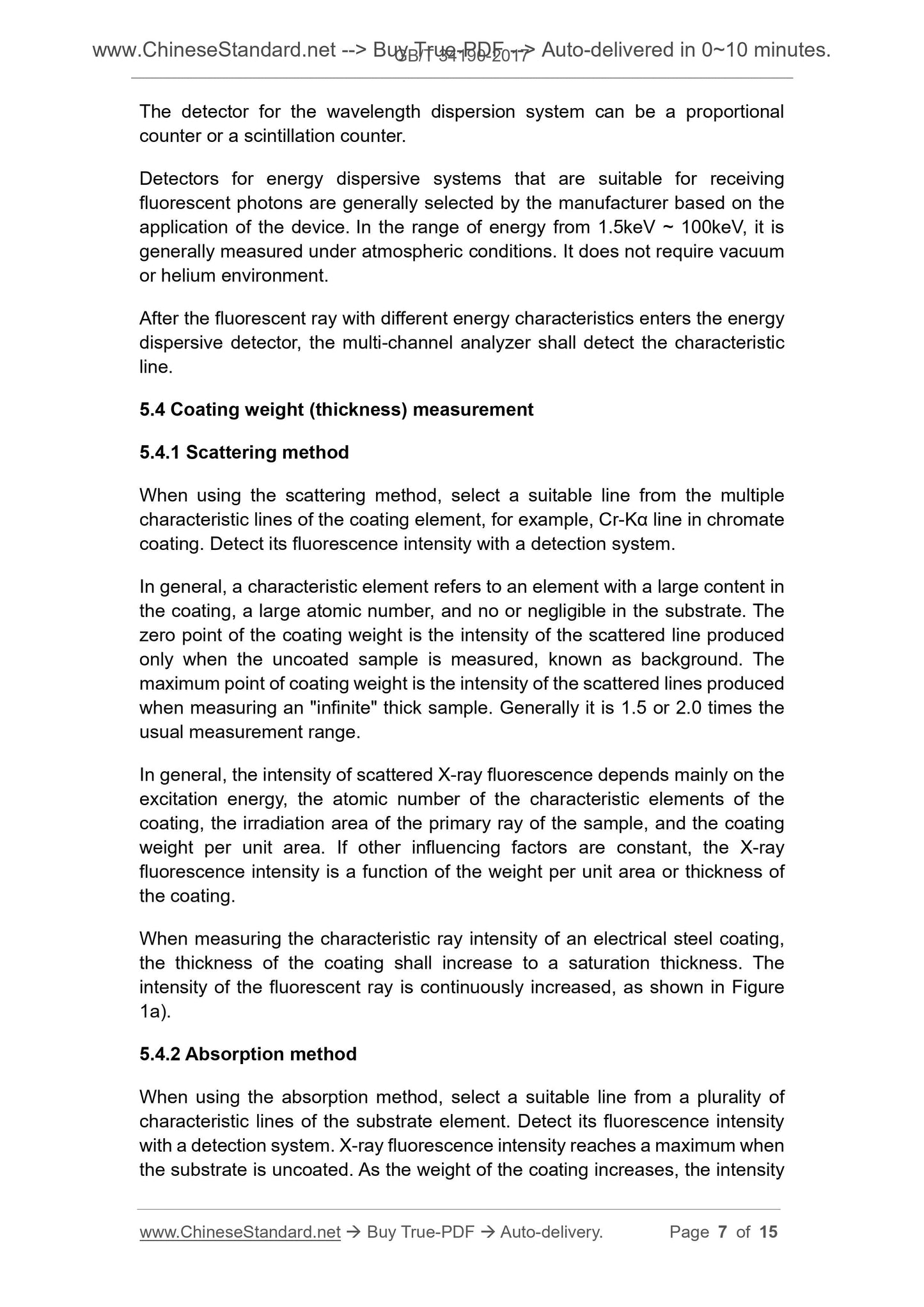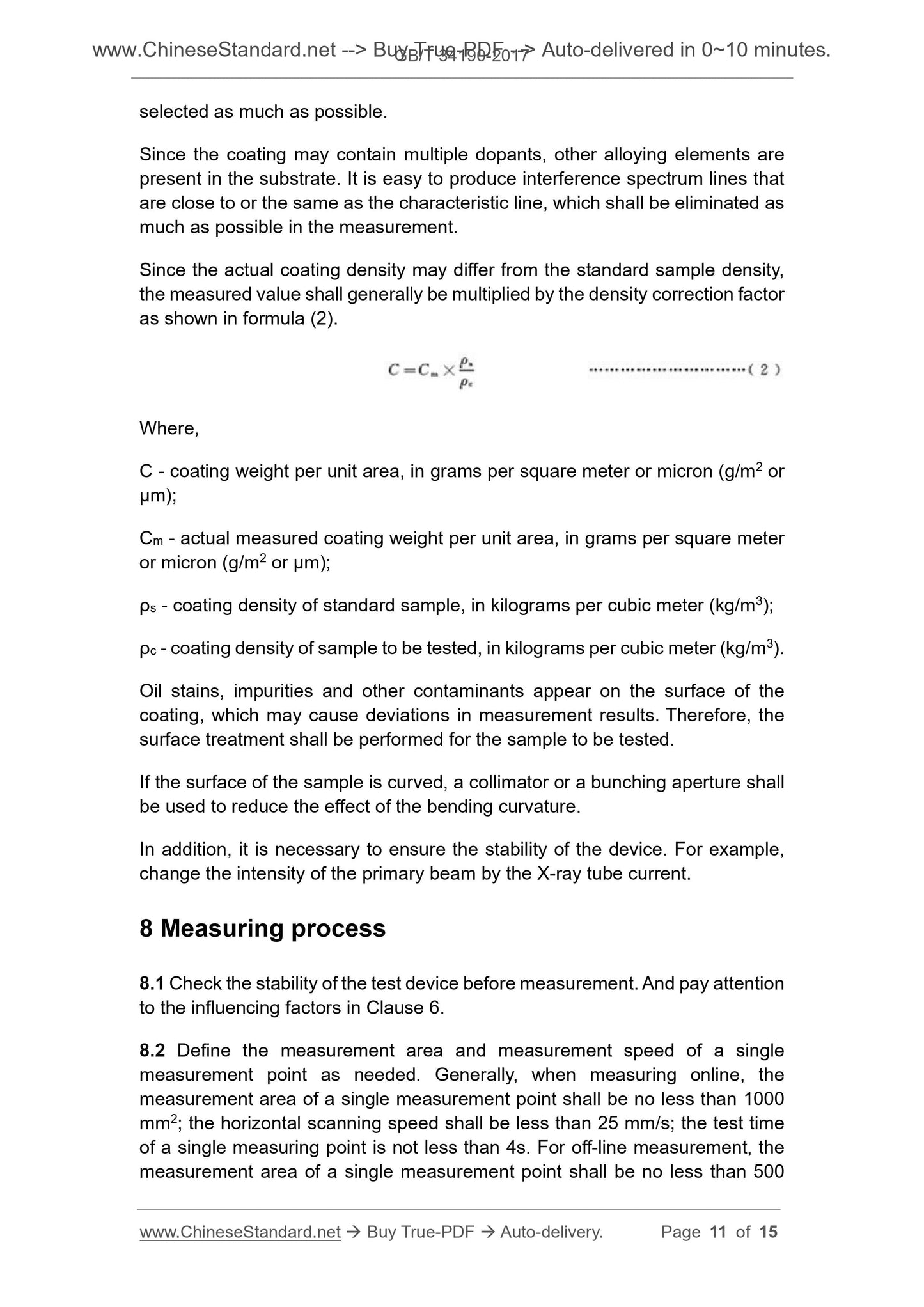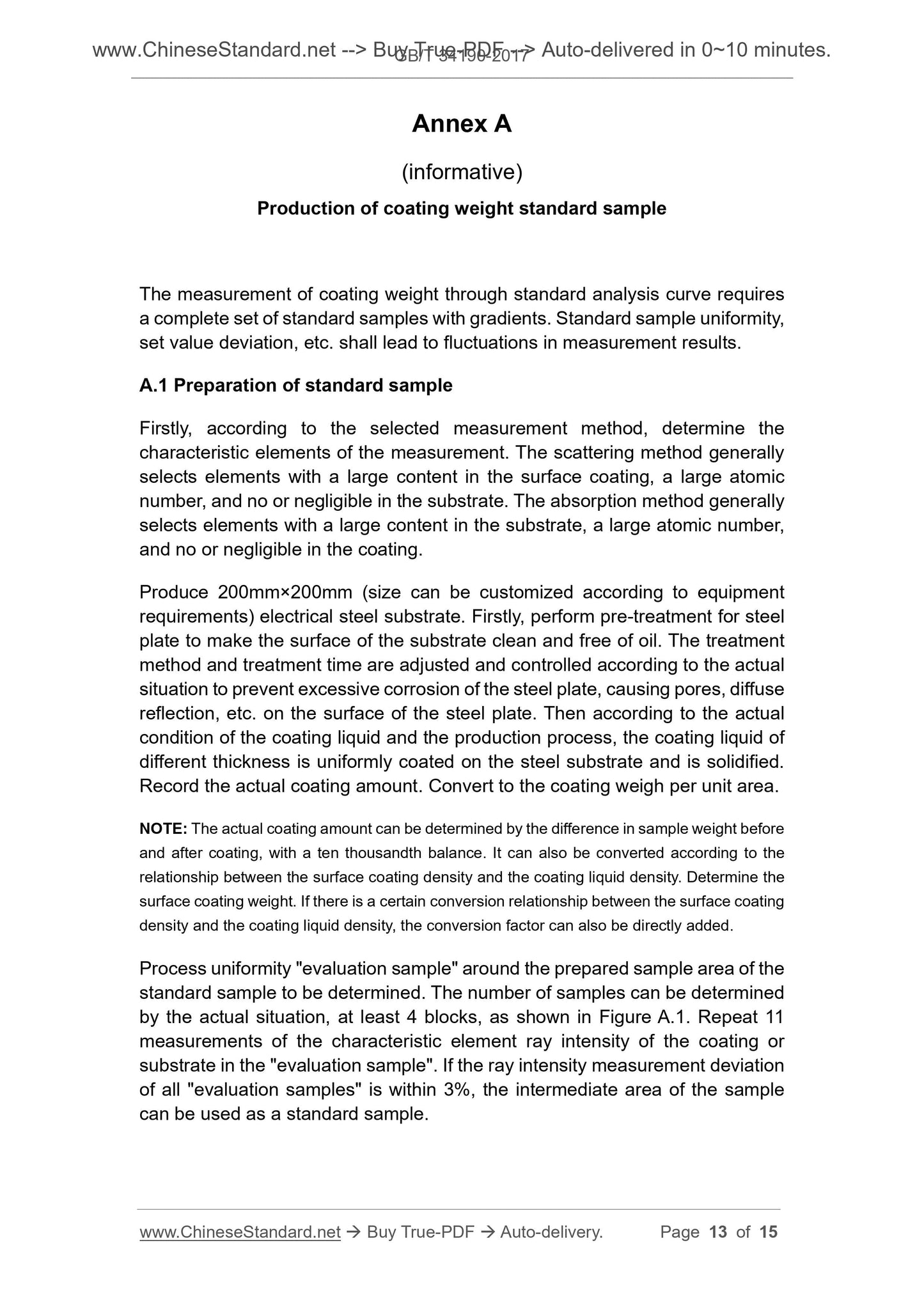1
/
of
7
www.ChineseStandard.us -- Field Test Asia Pte. Ltd.
GB/T 34190-2017 English PDF (GB/T34190-2017)
GB/T 34190-2017 English PDF (GB/T34190-2017)
Regular price
$145.00
Regular price
Sale price
$145.00
Unit price
/
per
Shipping calculated at checkout.
Couldn't load pickup availability
GB/T 34190-2017: Surface coating weight (thickness) of electrical steel - X-ray spectrometric method
Delivery: 9 seconds. Download (and Email) true-PDF + Invoice.Get Quotation: Click GB/T 34190-2017 (Self-service in 1-minute)
Newer / historical versions: GB/T 34190-2017
Preview True-PDF
Scope
This Standard specifies the method that uses X-ray spectrometric method totest the surface coating weight (thickness) of electrical steel.
This Method is for measuring the coating weight per unit area of a sample at
room temperature. The measurement results can also be expressed by the
thickness of the coating.
This Standard is applicable to the electrical steel that contains stable,
undisturbed, X-ray fluorescence intensity characteristic elements in surface
coating. The measurement range of a given coating material depends primarily
on the available characteristic X-ray fluorescence intensity and acceptable
measurement uncertainty. And it varies depending on the instrument and
measurement method used.
Basic Data
| Standard ID | GB/T 34190-2017 (GB/T34190-2017) |
| Description (Translated English) | Surface coating weight (thickness) of electrical steel - X-ray spectrometric method |
| Sector / Industry | National Standard (Recommended) |
| Classification of Chinese Standard | H21 |
| Word Count Estimation | 10,12 |
| Date of Issue | 2017-09-07 |
| Date of Implementation | 2018-06-01 |
| Issuing agency(ies) | General Administration of Quality Supervision, Inspection and Quarantine of the People's Republic of China, Standardization Administration of the People's Republic of China |
Share
